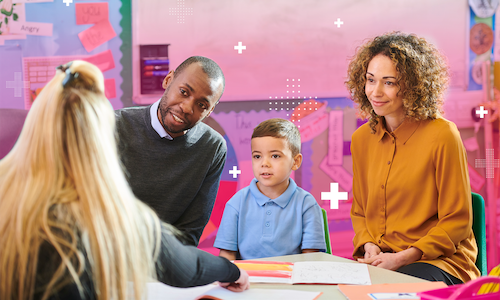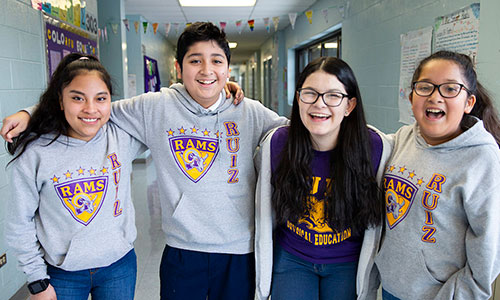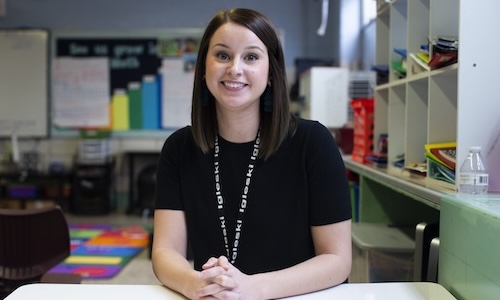
Four years after the onset of the pandemic, the dust is settling as a new education landscape comes into focus. Thanks to NWEA assessments and research, we have not only valuable longitudinal data showing trends in achievement and growth but also a body of emerging evidence on the impact and efficacy of summer school, high-dosage tutoring, and the other academic recovery strategies underway in districts across the country.
A recent webinar, “NWEA research snapshot: Insights on recovery strategies,” pulled these insights—and some illuminating statistics—into a succinct 45-minute presentation that is now available to watch on demand. The webinar was hosted by Karyn Lewis, PhD, director of research and policy partnerships at NWEA, and co-presented by NWEA research scientists Ayesha Hashim, PhD, and Miles Davison, PhD.
Karyn and her colleagues opened their talk with a revealing look at two sets of MAP® Growth™ data: one from the last few years (let’s call it the pandemic era) and one showing historical trend lines. Importantly, they looked at both academic achievement and growth to better understand whether the gains students made—or failed to make—over time were consistent with what we’d expect based on pre-pandemic trends.
These two areas—achievement and growth—are what give us the whole picture of student learning. While achievement trends can help us understand how much unfinished learning remains, growth patterns give researchers critical insight into how quickly we can reasonably expect to close the gaps they identify.
On to the findings
Karyn and her colleagues shared findings from three school years, beginning with the first full academic year after the onset of the pandemic. The webinar has all the details, but here are some of the key findings:
- 2021–21: Achievement levels were already tracking below pre-pandemic trends, especially in math. Students made gains as the year progressed, but consistently lagged where they would have been if their learning hadn’t been upended by COVID-19.
- Spring 2021: Outcomes bottomed out. That’s where we see the widest gap between test scores relative to historical baselines.
- 2021–22: The second full year after the onset of the pandemic showed some promising signs. Despite the persistence of achievement gaps, growth trends were looking closer to normal and students were making gains that actually exceeded pre-pandemic trends.
- Summer 2022: Another promising sign came when the summer slide (the achievement dip that’s typical of the months away from school) was less extreme than we see in a normal year.
- 2022–23: Looking at the totality of the school year, NWEA hoped to find proof of additional progress toward recovery, but growth that year lagged behind pre-pandemic trends, and students finished the year a little worse off than where they started.
So what’s the upshot of this year-by-year analysis? Despite some signs of academic recovery, progress has been modest and efforts seem to have stalled. The amount of catch-up learning that kids need—especially older students—exceeds what can be done in a single year. Karyn called out the “compounding debt” of failing to address unfinished learning in previous years, leaving students less prepared as they move from one grade to the next.
Another key takeaway from the webinar confirms what we already know: Marginalized students—particularly Black and Hispanic students and kids from high-poverty areas—have been disproportionately impacted and have further to go with their academic recovery than their more advantageously situated peers.
These challenges won’t come as news to anyone who teaches for a living or follows the news and trends in education. But what about the solutions? How can we close these gaps? Or, as Karyn put it: “What are the practical steps we need to take to ensure that our students regain the ground that has been lost?”
Road to COVID Recovery
Ayesha opened her part of the presentation by reminding the audience that much of the recovery effort we’ve seen has been made possible by the federal government’s Elementary and Secondary School Emergency Relief Fund (ESSER). With ESSER funding in hand, districts have rolled out a wide range of initiatives, most notably summer learning and tutoring, but also after-school programs, virtual learning resources, and more.
To gain insights into the impact and success of these efforts, researchers from NWEA and several partner organizations launched the collaborative Road to COVID Recovery (R2R) project. Focusing on summer programs and tutoring specifically, here’s some of what they found in the districts they looked at:
- Summer school participation and hours of instruction fell short of what was recommended in R2R districts.
- Math test scores saw small but positive impacts for students who attended summer school. This was consistent with pre-pandemic summer school outcomes, but the magnitude of the effect was smaller.
- Reading test scores were flat for summer-school students in R2R districts.
- Districts faced major implementation challenges in rolling out their summer-school programs due to difficulty reaching targeted students, staffing challenges, and other factors.
High-dosage tutoring for at-risk students
As Miles explained in the webinar, at-risk students are defined as those who are not expected to learn grade-level skills or pass coursework without intensive support outside of classroom instruction. To meet the needs of this cohort—which has grown in size since the pandemic—R2R districts have used ESSER funding to implement high-dosage tutoring. But with ESSER funding slated to end in 2025, districts need to be increasingly strategic with their ongoing academic recovery strategies.
Students who take part in high-dosage tutoring typically meet one-on-one or in small groups for a minimum of 30 minutes, at least two or three times a week. Research has shown that high-dosage tutoring can bring about large gains in reading and math scores, help elementary students build foundational skills, and provide much-needed support for middle and high school students who need it.
However, the success of high-dosage tutoring depends on a number of factors, what Miles called the “non-negotiables”:
- Consistent frequency and scheduling
- Small group size
- Experienced or well-trained tutors
- Thorough measurement to monitor learning and tailor instruction
- High-quality curriculum materials aligned to classroom content
- Strong tutor–student relationships
Learn more about instructional recovery strategies
As school districts look for ways to sustain and bolster their academic recovery efforts in the years ahead, determining what’s worked—and what hasn’t—will be an ongoing priority as funding for these efforts ebbs and flows.
For more insights into the impact of instructional recovery strategies, including a closer look at the statistics behind these conclusions and implications for the future, check out the on-demand webinar.







